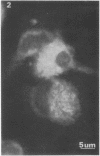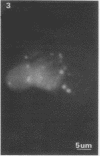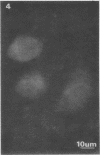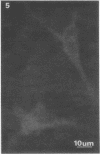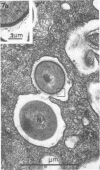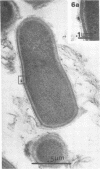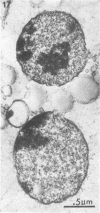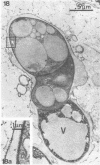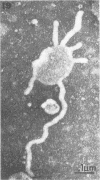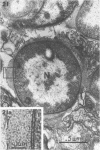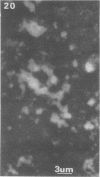Abstract
Mouse peritoneal macrophages were infected with varying numbers of Nocardia asteroides 10905, and the fate of the ingested organisms was determined by viable plate count (VPC), light microscopy (LM), immunofluorescent microscopy (IM), and electron microscopy (EM). The results obtained with these methods differed. VPC indicated that intracellular Nocardia decreased in numbers during the first 12 days, followed by significant increases after 16 days. LM suggested that N. asteroides 10905 was slowly degraded by macrophages with no subsequent increases observed. In contrast, IM demonstrated large numbers of intracellular Nocardia throughout the experiment. EM studies of infected macrophages failed to demonstrate intact bacteria after 8 days; however, wall-less and spheroplast-like organisms were seen. These results suggested that N. asteroides 10905 was present within the macrophages in an altered form. By using hypertonic culture medium, we were able to isolate, from infected macrophages, organisms which exhibited many of the properties of bacterial L-forms. IM demonstrated these variants to be of nocardial origin. These altered forms also reverted to typical nocardial cells either spontaneously or upon transfer into broth. These findings indicate that N. asteroides 10905 is capable of existing within macrophages in an altered state. Further investigation is in progress to determine whether these altered forms represent L-forms or transitional-phase variants.
Full text
PDF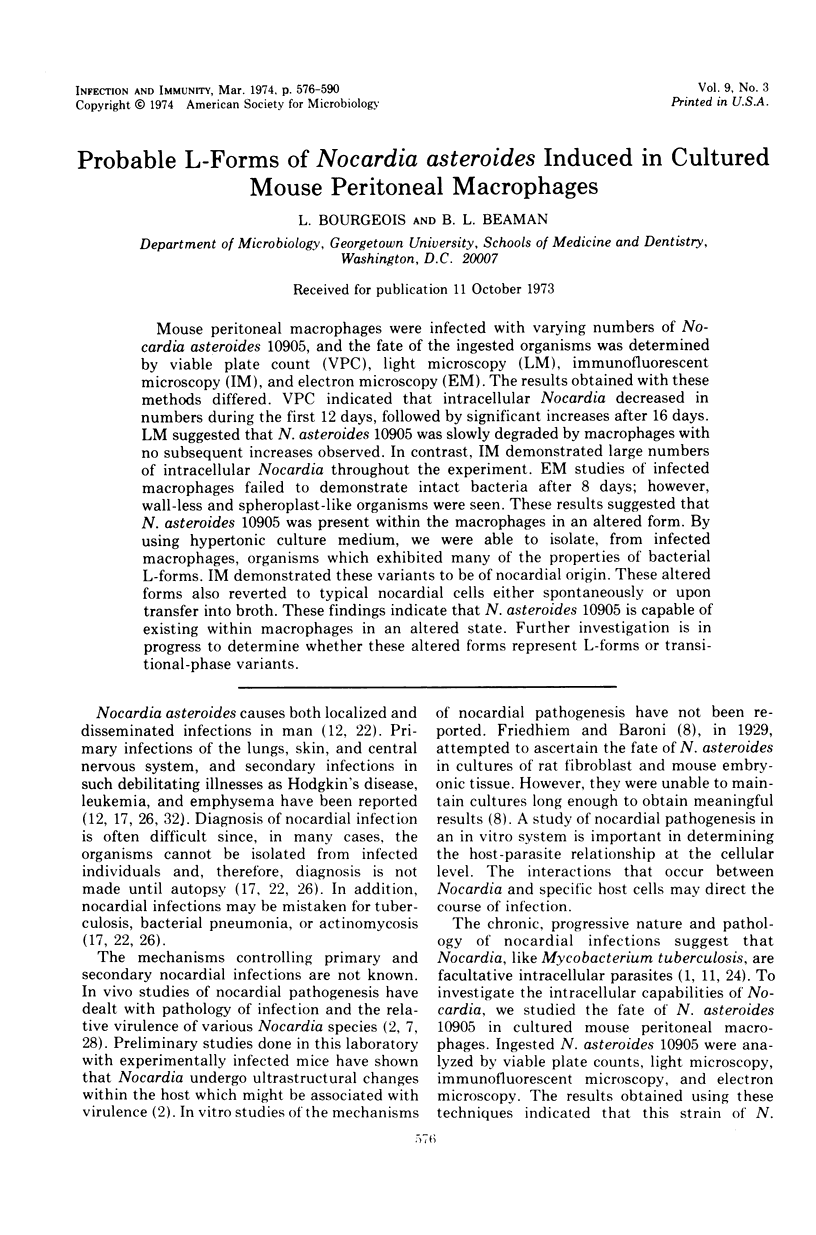
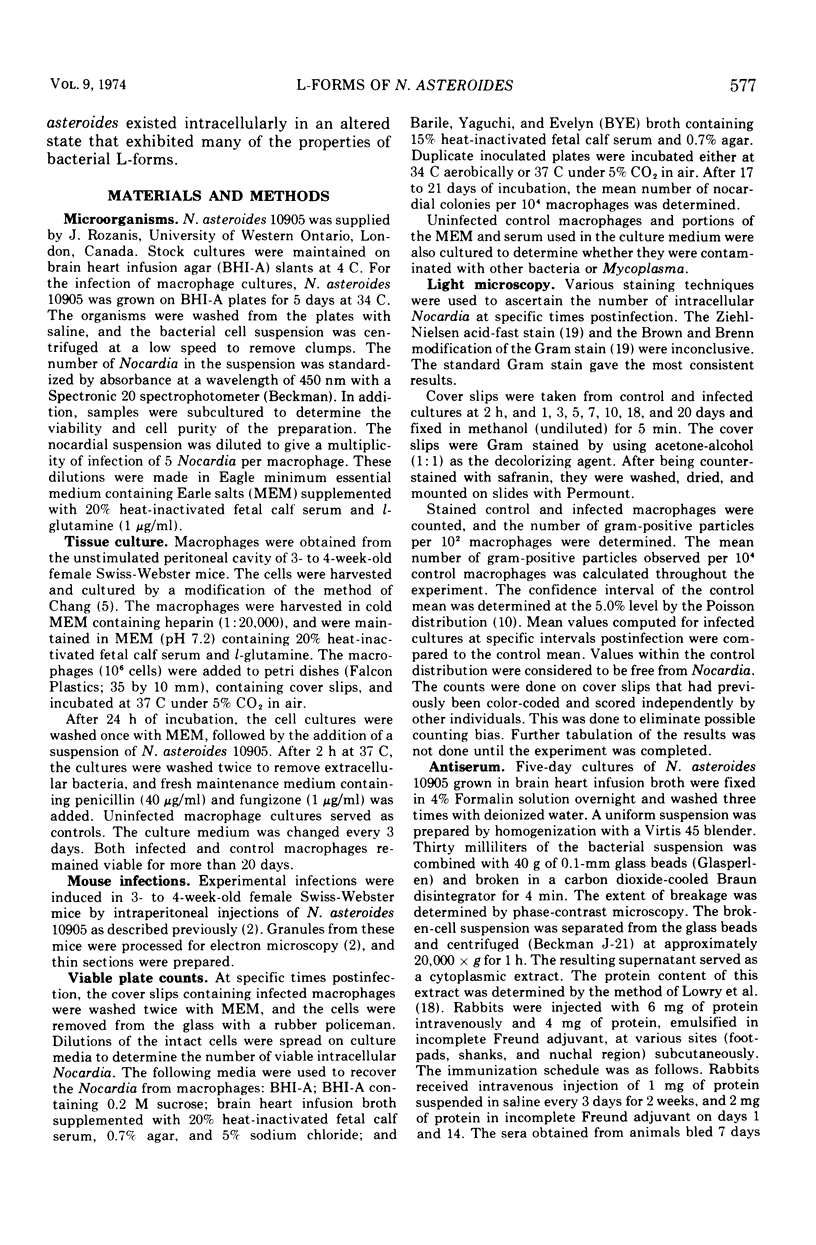
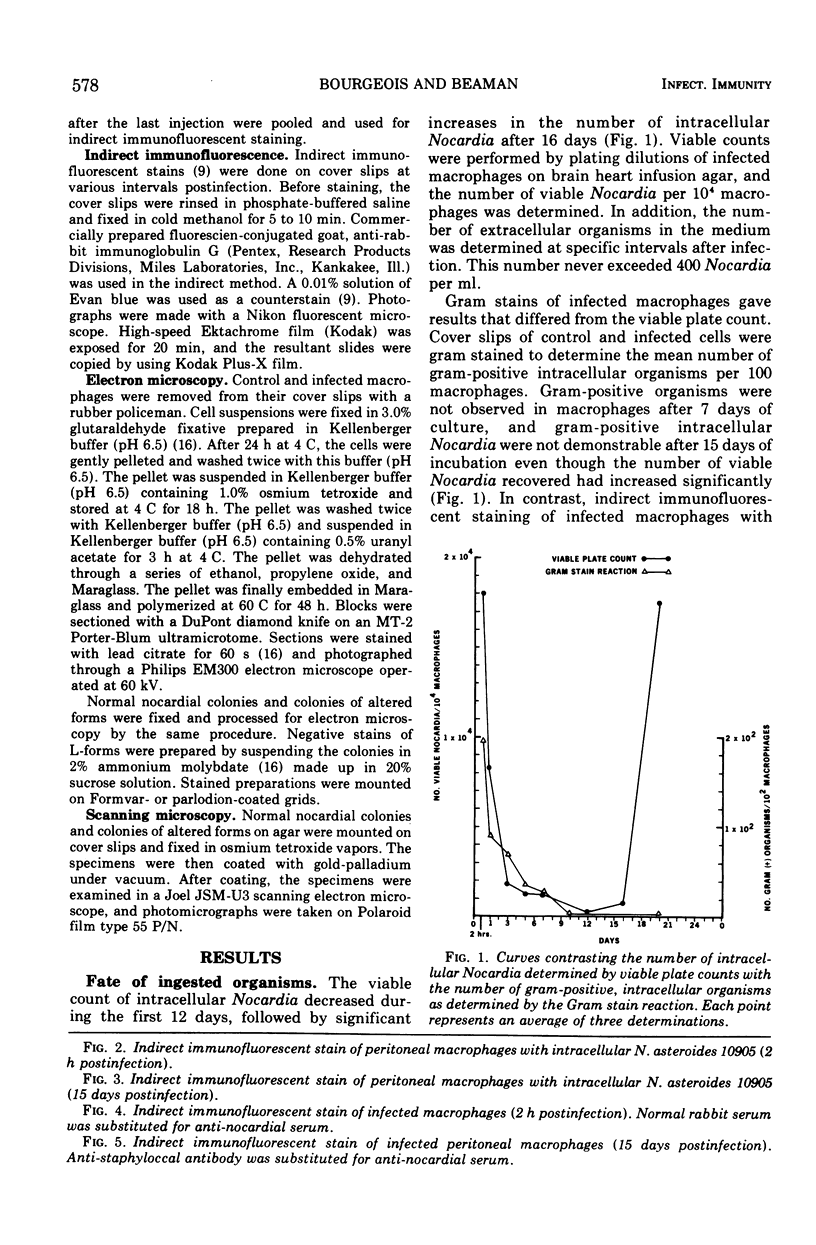

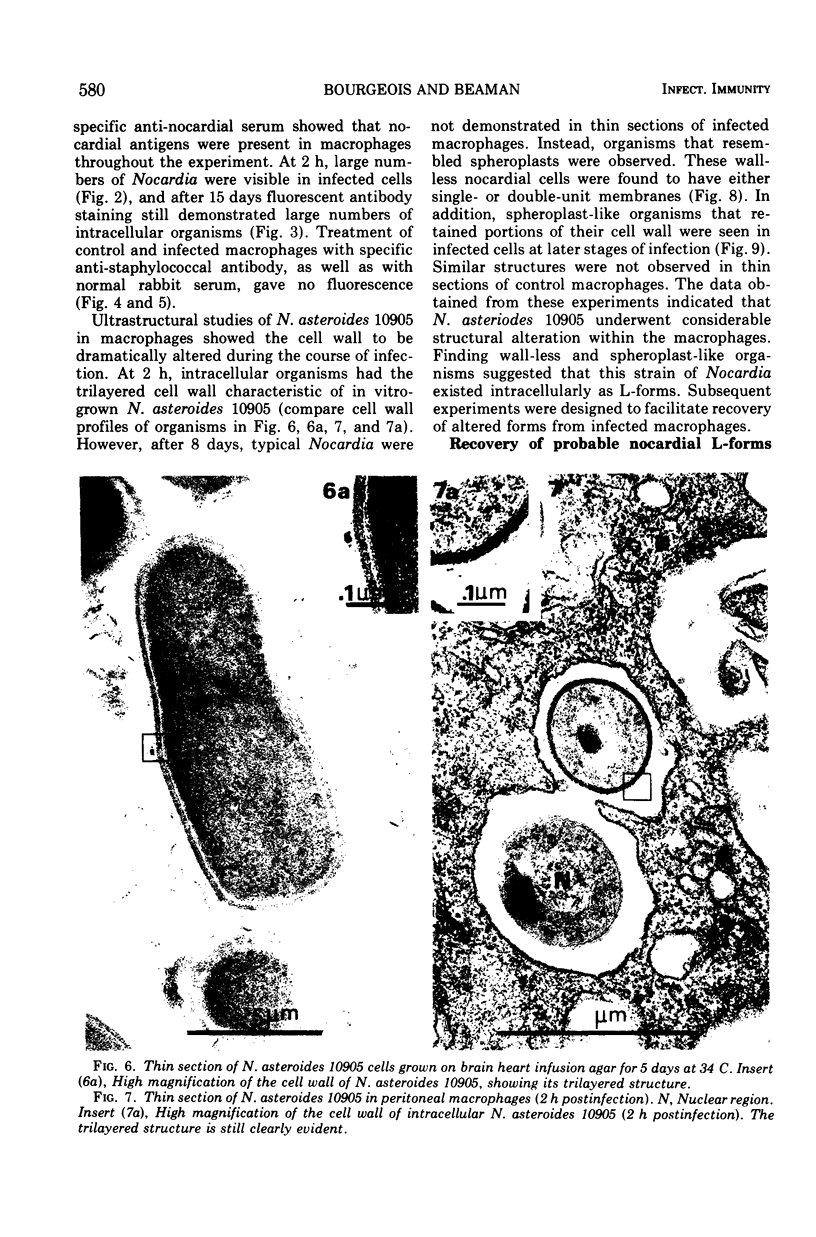
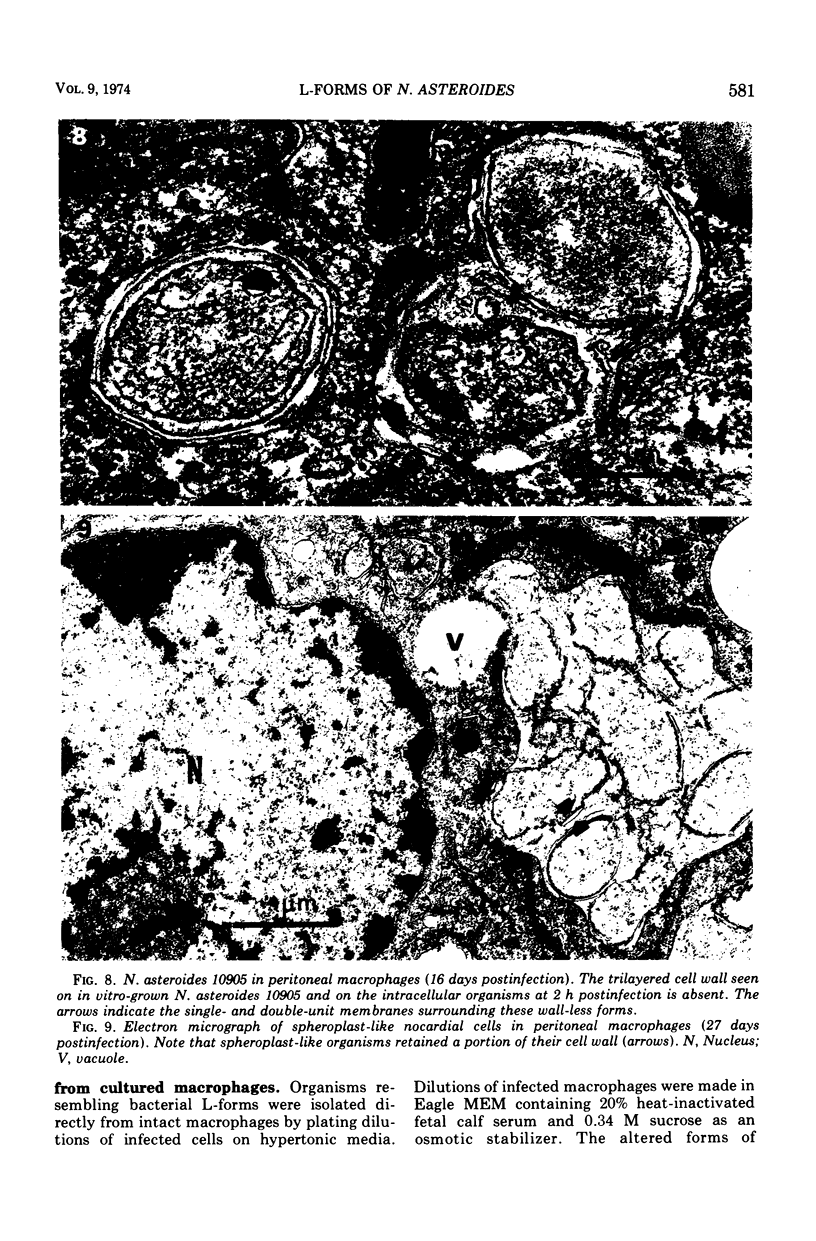
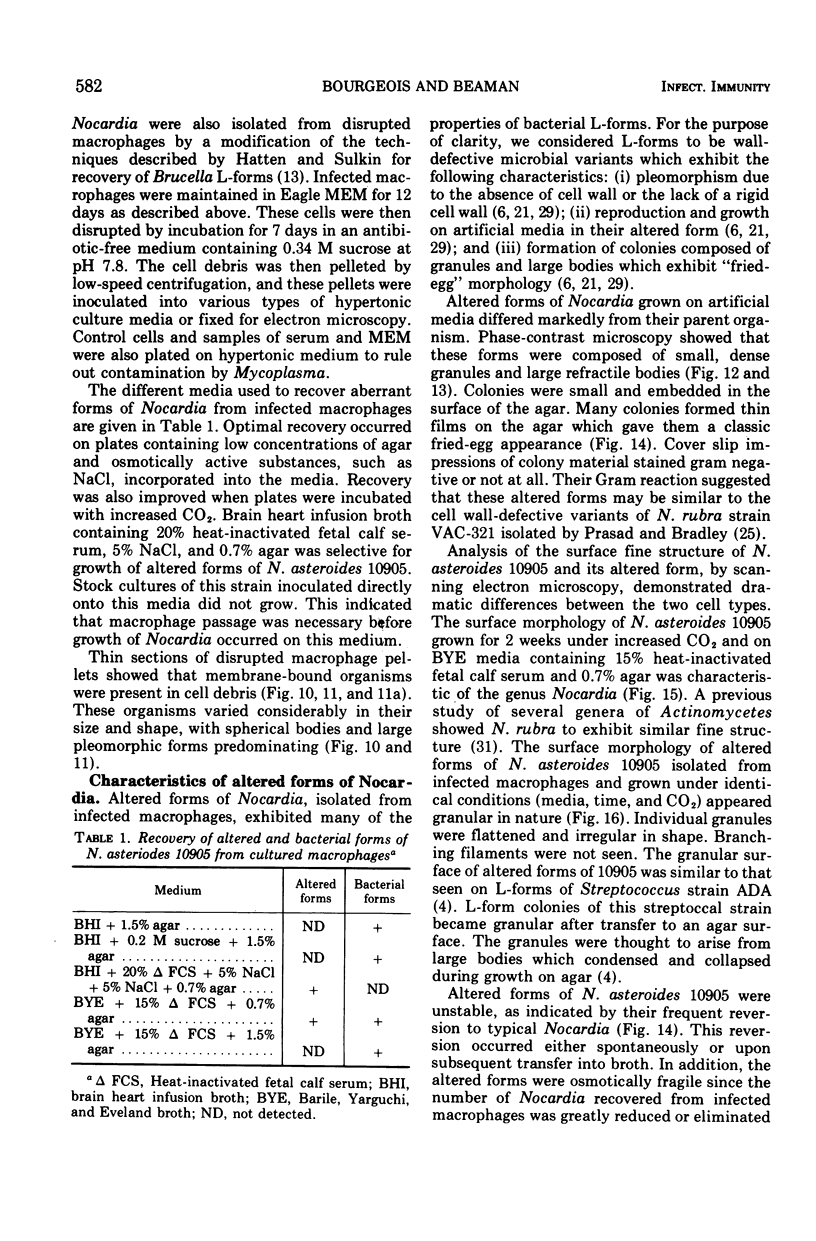
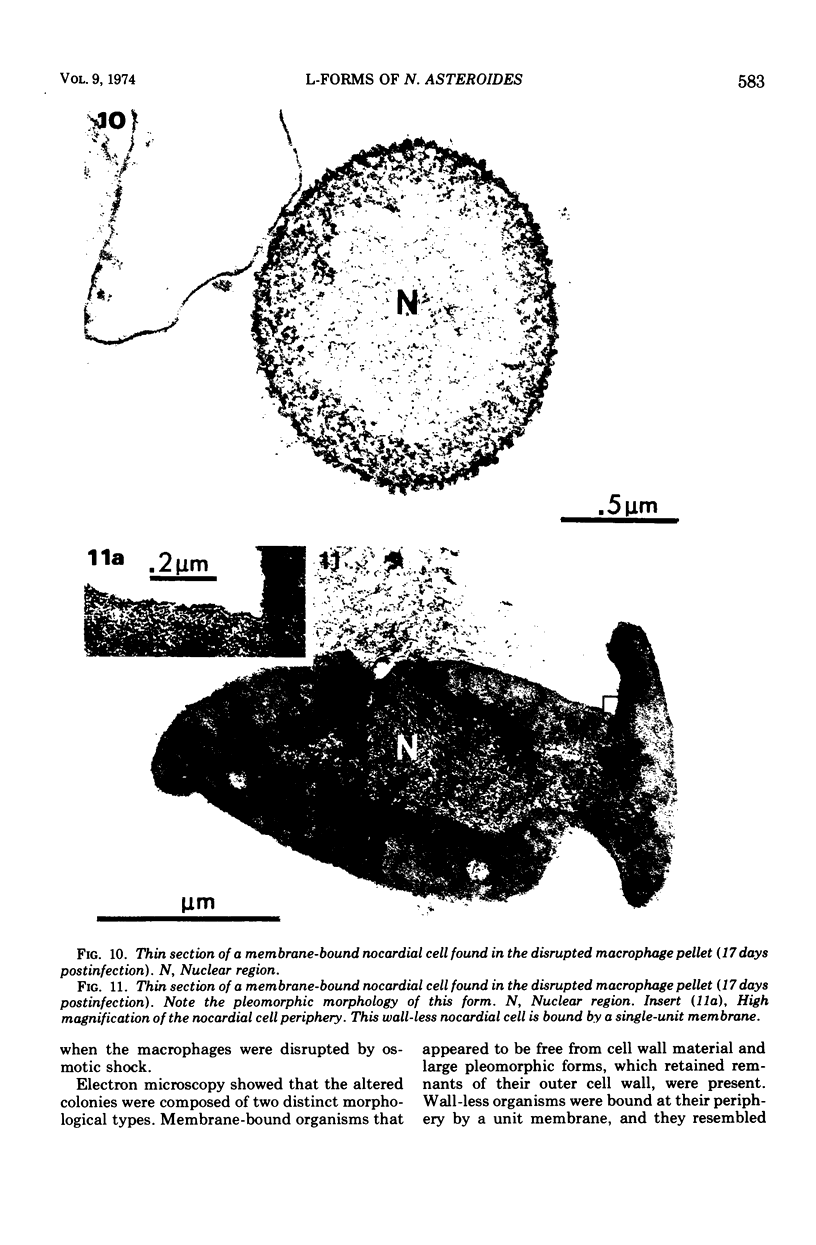
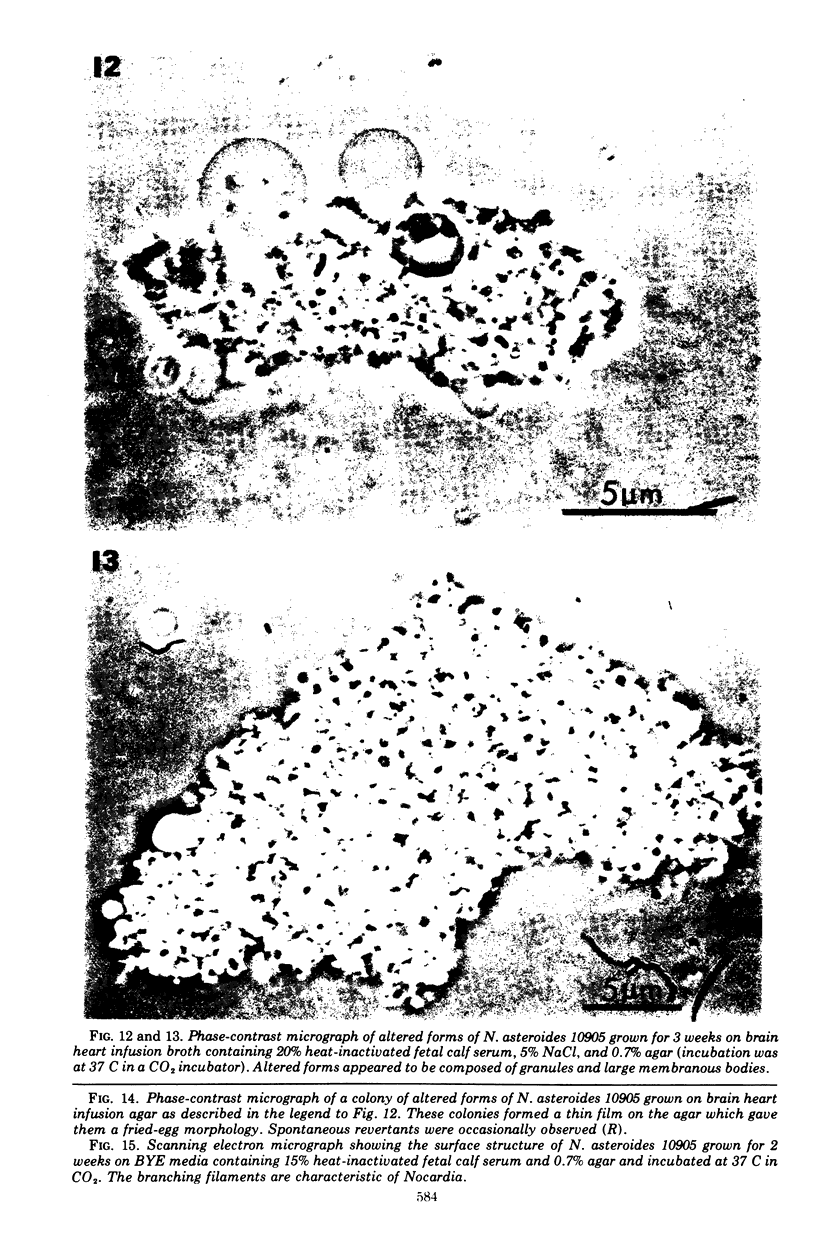
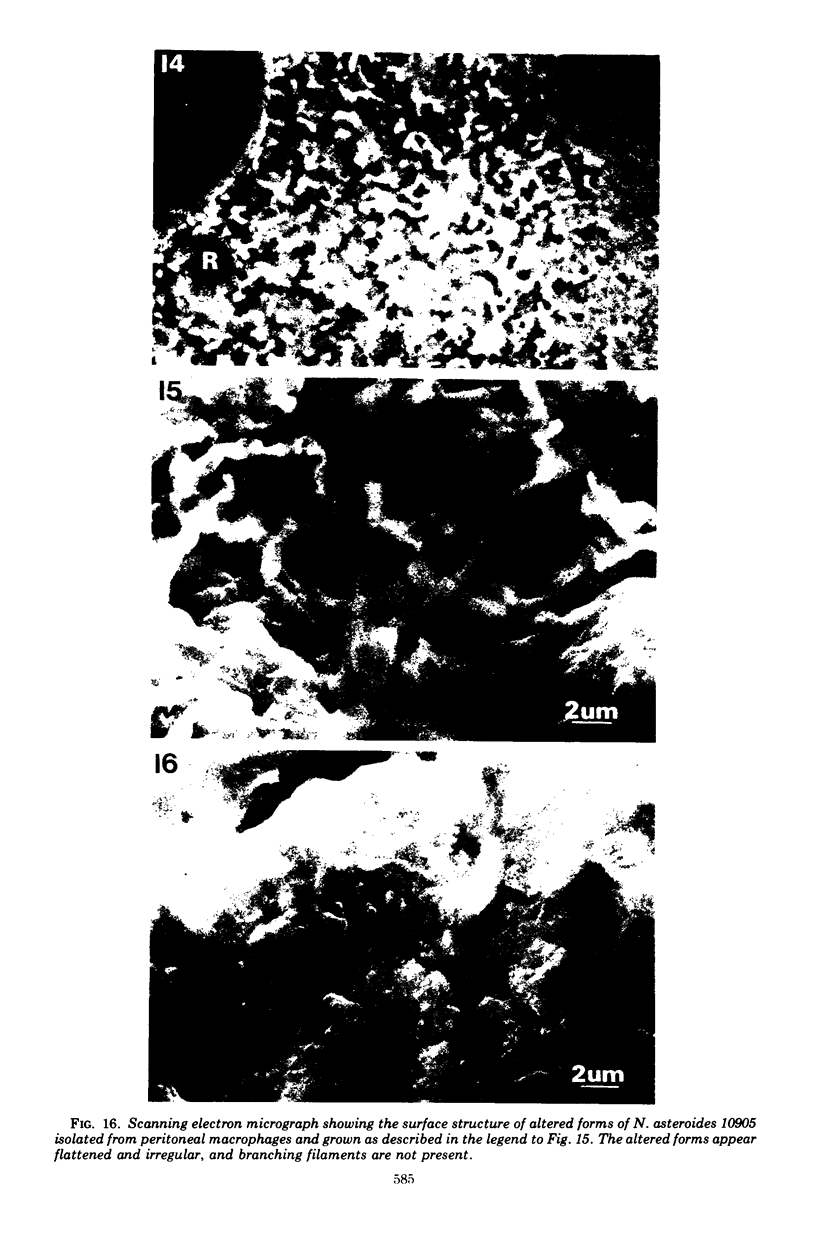
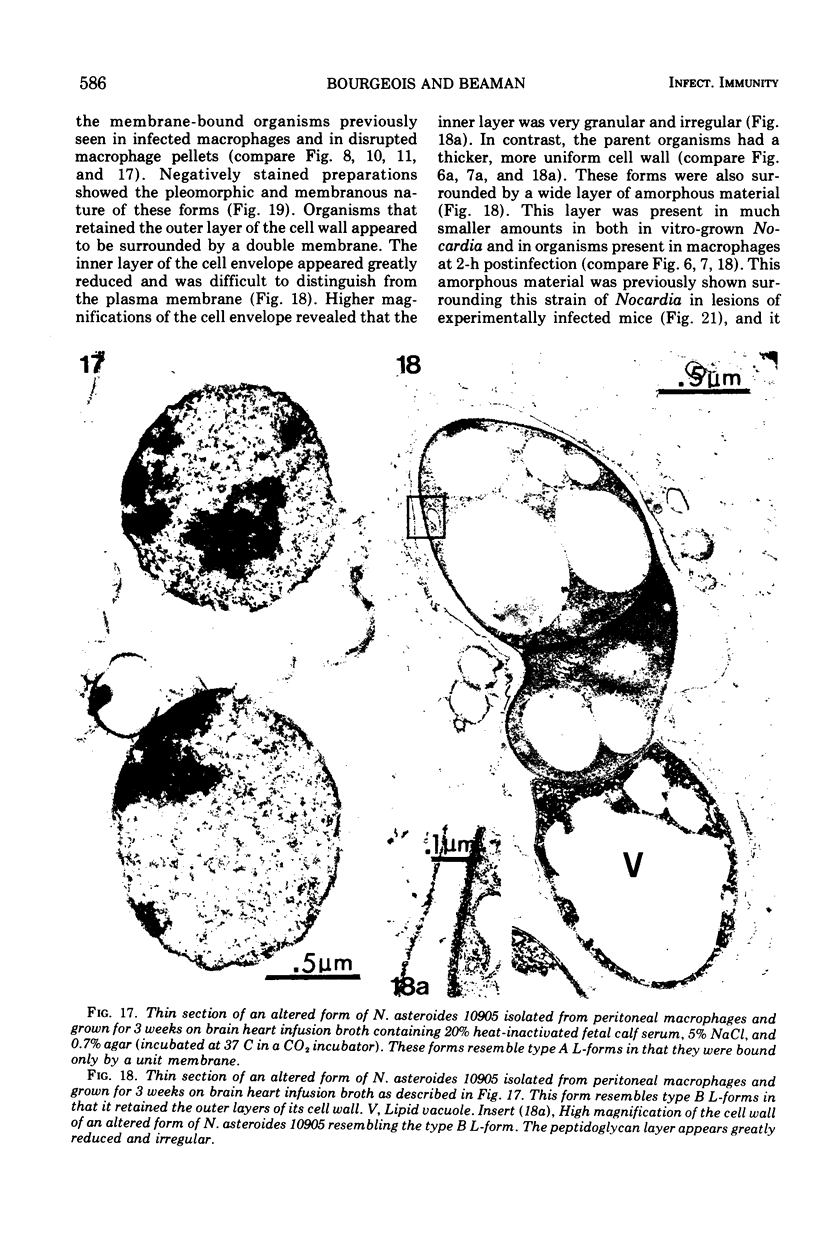
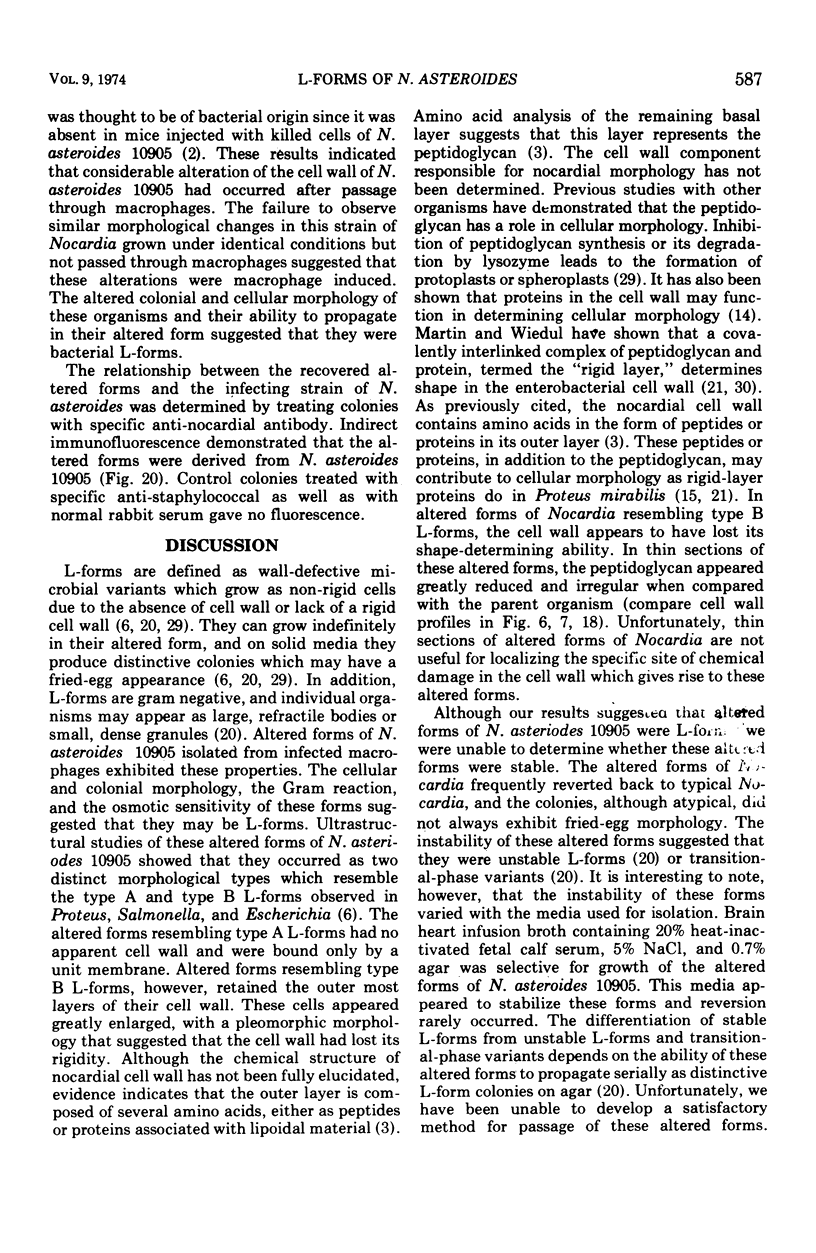
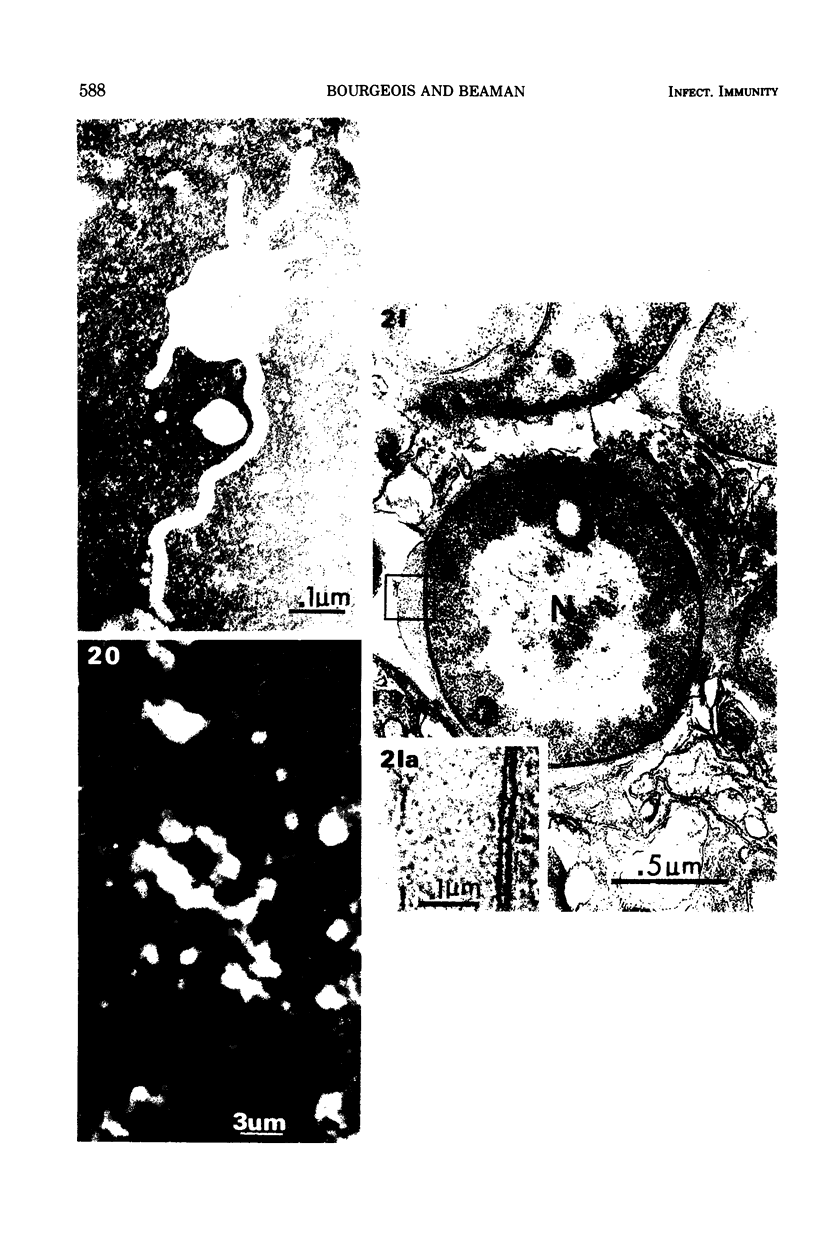
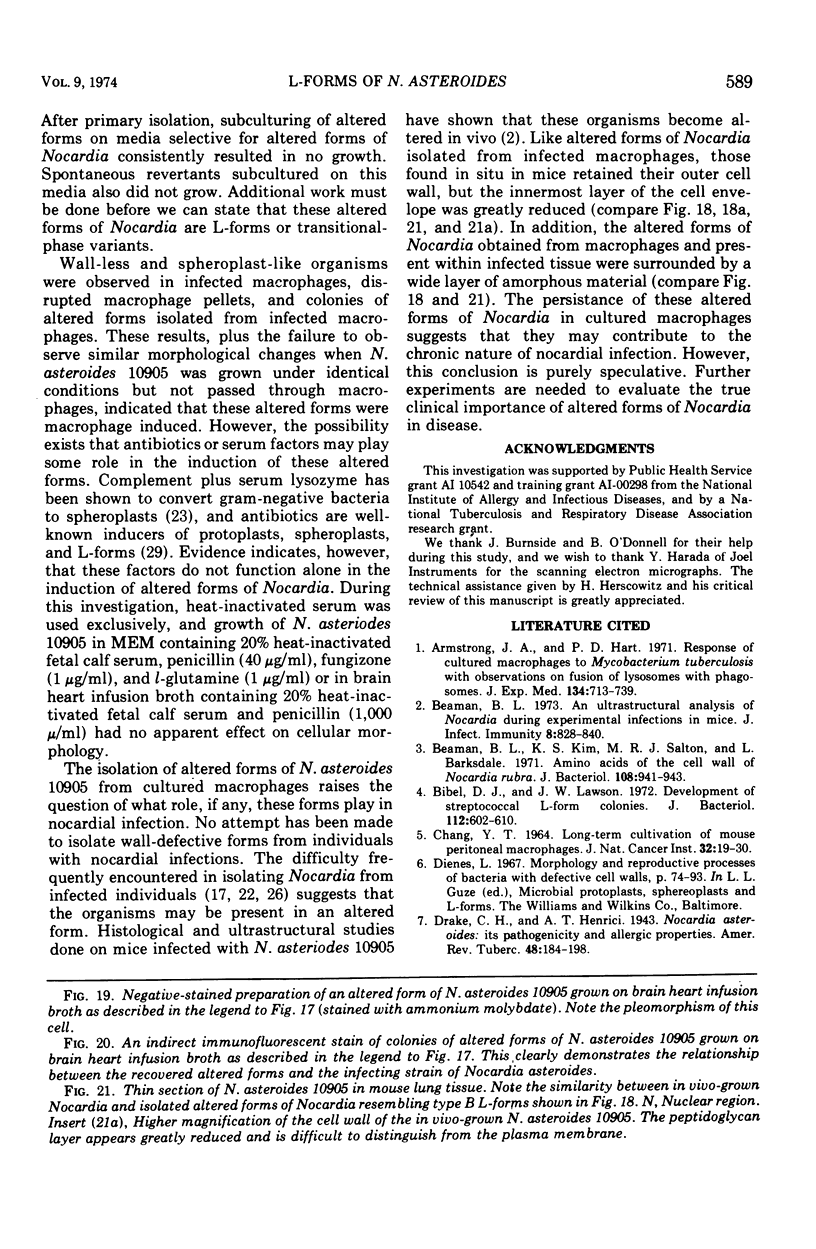
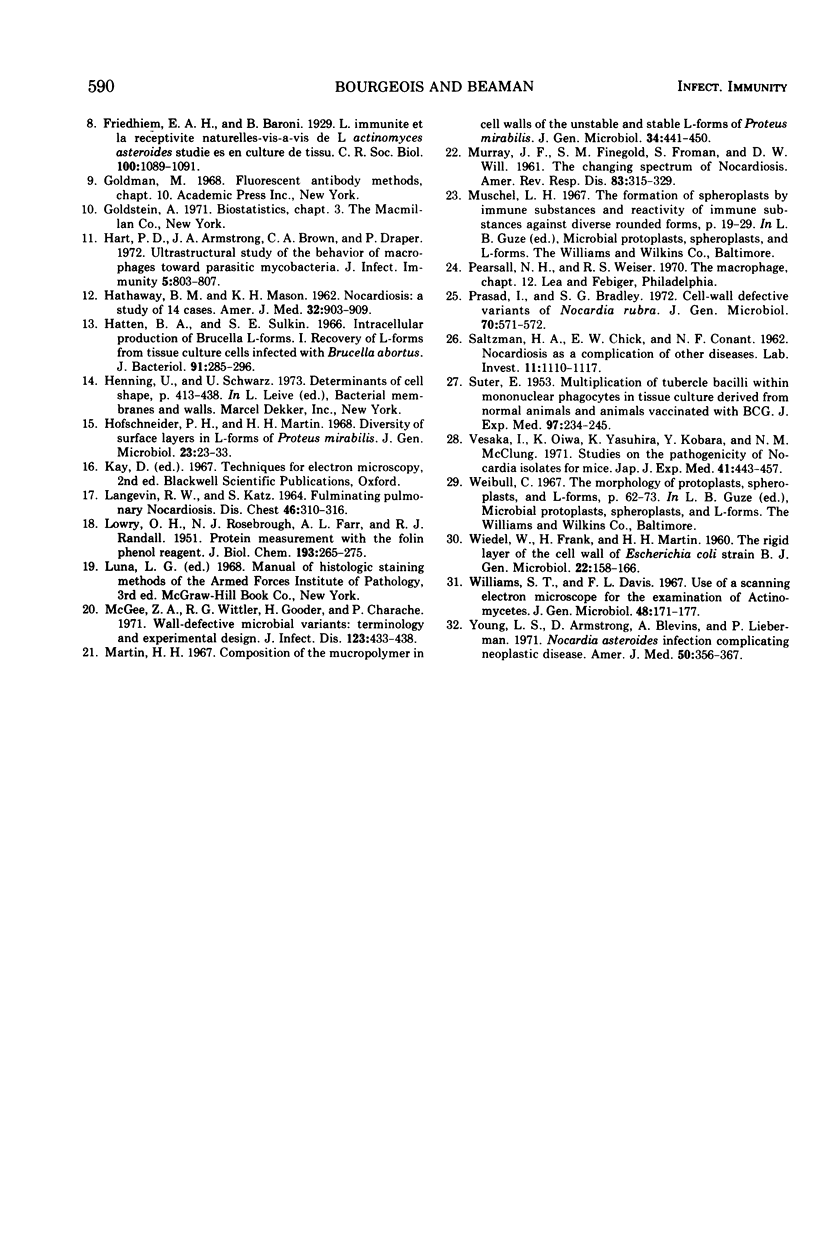
Images in this article
Selected References
These references are in PubMed. This may not be the complete list of references from this article.
- Armstrong J. A., Hart P. D. Response of cultured macrophages to Mycobacterium tuberculosis, with observations on fusion of lysosomes with phagosomes. J Exp Med. 1971 Sep 1;134(3 Pt 1):713–740. doi: 10.1084/jem.134.3.713. [DOI] [PMC free article] [PubMed] [Google Scholar]
- Beaman B. L. An ultrastructural analysis of Nocardia during experimental infections in mice. Infect Immun. 1973 Nov;8(5):828–840. doi: 10.1128/iai.8.5.828-840.1973. [DOI] [PMC free article] [PubMed] [Google Scholar]
- Beaman B. L., Kim K. S., Salton M. R., Barksdale L. Amino acids of the cell wall of Nocardia rubra. J Bacteriol. 1971 Nov;108(2):941–943. doi: 10.1128/jb.108.2.941-943.1971. [DOI] [PMC free article] [PubMed] [Google Scholar]
- Bibel D. J., Lawson J. W. Development of streptococcal L-form colonies. J Bacteriol. 1972 Oct;112(1):602–610. doi: 10.1128/jb.112.1.602-610.1972. [DOI] [PMC free article] [PubMed] [Google Scholar]
- CHANG Y. T. LONG-TERM CULTIVATION OF MOUSE PERITONEAL MACROPHAGES. J Natl Cancer Inst. 1964 Jan;32:19–35. [PubMed] [Google Scholar]
- HATHAWAY B. M., MASON K. N. Nocardiosis. Study of fourteen cases. Am J Med. 1962 Jun;32:903–909. doi: 10.1016/0002-9343(62)90036-0. [DOI] [PubMed] [Google Scholar]
- Hart P. D., Armstrong J. A., Brown C. A., Draper P. Ultrastructural study of the behavior of macrophages toward parasitic mycobacteria. Infect Immun. 1972 May;5(5):803–807. doi: 10.1128/iai.5.5.803-807.1972. [DOI] [PMC free article] [PubMed] [Google Scholar]
- Hatten B. A., Sulkin S. E. Intracellular Production of Brucella L Forms I. Recovery of L Forms from Tissue Culture Cells Infected with Brucella abortus. J Bacteriol. 1966 Jan;91(1):285–296. doi: 10.1128/jb.91.1.285-296.1966. [DOI] [PMC free article] [PubMed] [Google Scholar]
- Hofschneider P. H., Martin H. H. Diversity of surface layers in L-forms of Proteus mirabilis. J Gen Microbiol. 1968 Apr;51(1):23–33. doi: 10.1099/00221287-51-1-23. [DOI] [PubMed] [Google Scholar]
- LANGEVIN R. W., KATZ S. FULMINATING PULMONARY NOCARDIOSIS. Dis Chest. 1964 Sep;46:310–316. doi: 10.1378/chest.46.3.310. [DOI] [PubMed] [Google Scholar]
- LOWRY O. H., ROSEBROUGH N. J., FARR A. L., RANDALL R. J. Protein measurement with the Folin phenol reagent. J Biol Chem. 1951 Nov;193(1):265–275. [PubMed] [Google Scholar]
- MURRAY J. F., FINEGOLD S. M., FROMAN S., WILL D. W. The changing spectrum of nocardiosis. A review and presentation of nine cases. Am Rev Respir Dis. 1961 Mar;83:315–330. doi: 10.1164/arrd.1961.83.3.315. [DOI] [PubMed] [Google Scholar]
- McGee Z. A., Wittler R. G., Gooder H., Charache P. Wall-defective microbial variants: terminology and experimental design. J Infect Dis. 1971 Apr;123(4):433–438. doi: 10.1093/infdis/123.4.433. [DOI] [PubMed] [Google Scholar]
- Prasad I., Bradley S. G. Cell-wall defective variant of Nocardia rubra. J Gen Microbiol. 1972 May;70(3):571–572. doi: 10.1099/00221287-70-3-571. [DOI] [PubMed] [Google Scholar]
- SALTZMAN H. A., CHICK E. W., CONANT N. F. Nocardiosis as a complication of other diseases. Lab Invest. 1962 Nov;11:1110–1117. [PubMed] [Google Scholar]
- SUTER E. Multiplication of tubercle bacilli within mononuclear phagocytes in tissue cultures derived from normal animals and animals vaccinated with BCG. J Exp Med. 1953 Feb 1;97(2):235–245. doi: 10.1084/jem.97.2.235. [DOI] [PMC free article] [PubMed] [Google Scholar]
- Uesaka I., Oiwa K., Yasuhira K., Kobara Y., McClung N. M. Studies on the pathogenicity of Nocardia isolates for mice. Jpn J Exp Med. 1971 Oct;41(5):443–457. [PubMed] [Google Scholar]
- WEIDEL W., FRANK H., MARTIN H. H. The rigid layer of the cell wall of Escherichia coli strain B. J Gen Microbiol. 1960 Feb;22:158–166. doi: 10.1099/00221287-22-1-158. [DOI] [PubMed] [Google Scholar]
- Williams S. T., Davies F. L. Use of scanning electron microscope for the examination of actinomycetes. J Gen Microbiol. 1967 Aug;48(2):171–177. doi: 10.1099/00221287-48-2-171. [DOI] [PubMed] [Google Scholar]
- Young L. S., Armstrong D., Blevins A., Lieberman P. Nocardia asteroides infection complicating neoplastic disease. Am J Med. 1971 Mar;50(3):356–367. doi: 10.1016/0002-9343(71)90224-5. [DOI] [PubMed] [Google Scholar]



